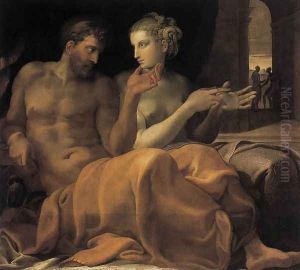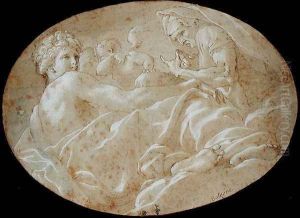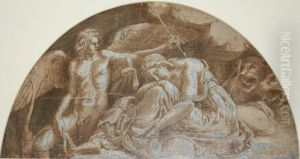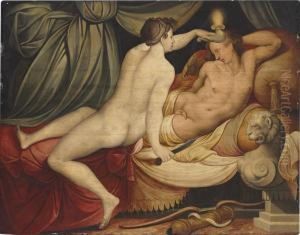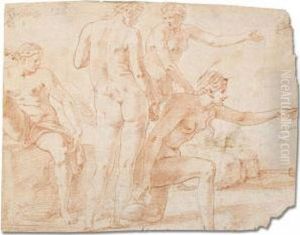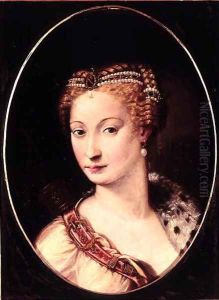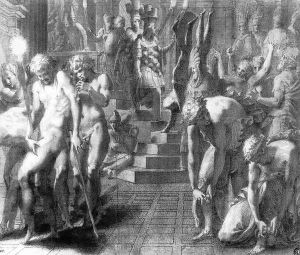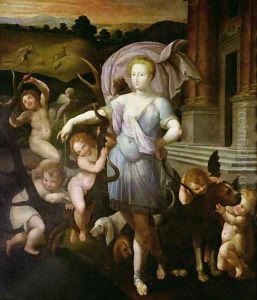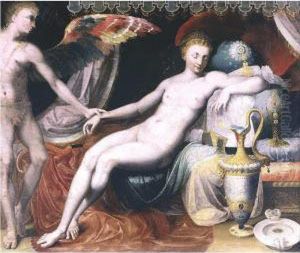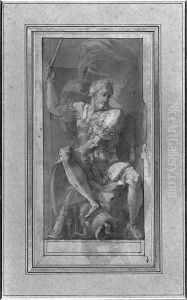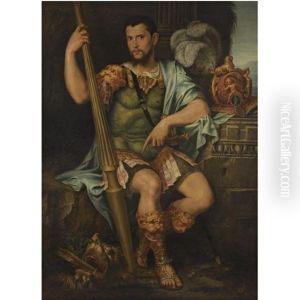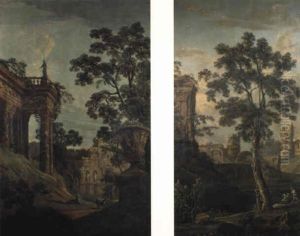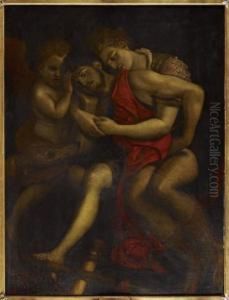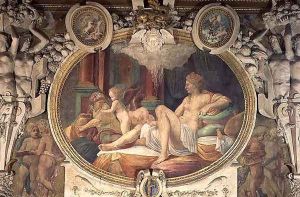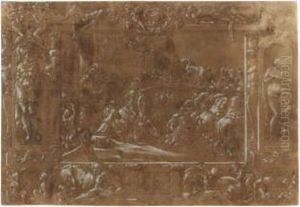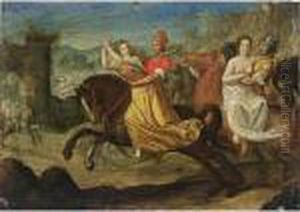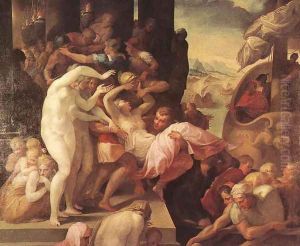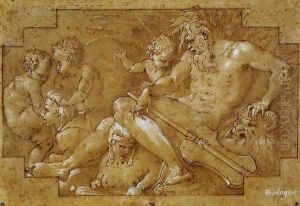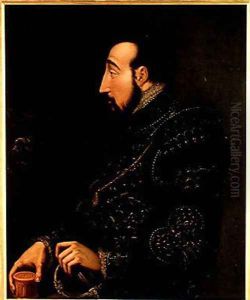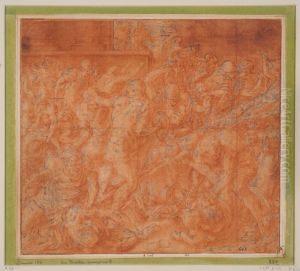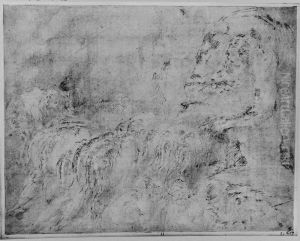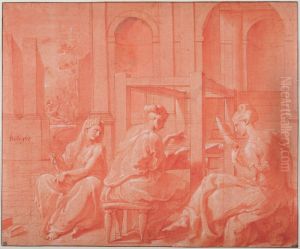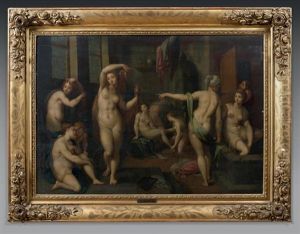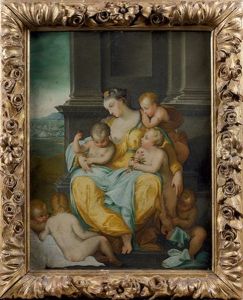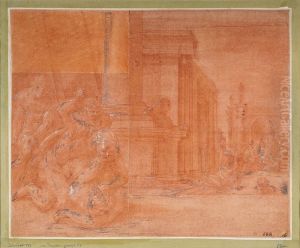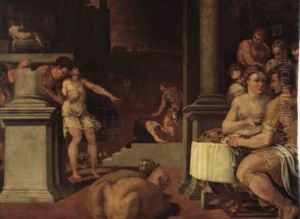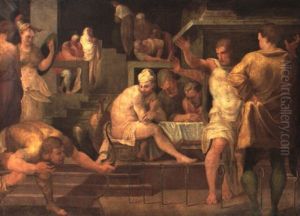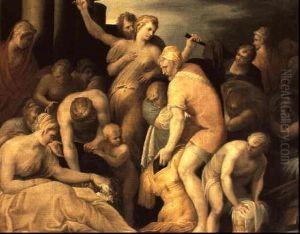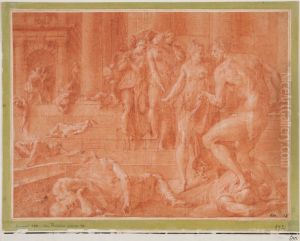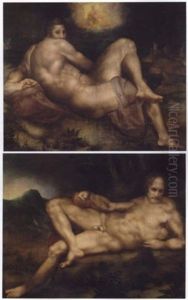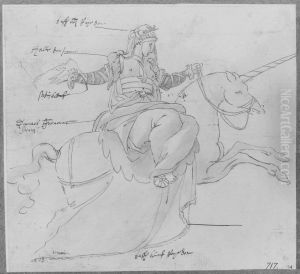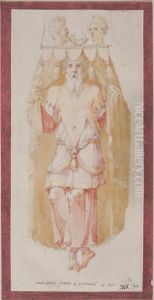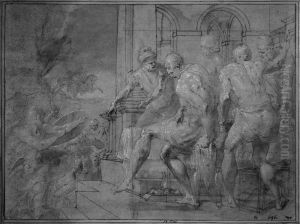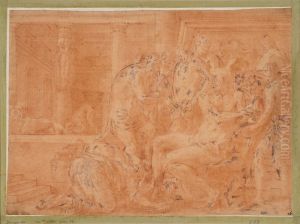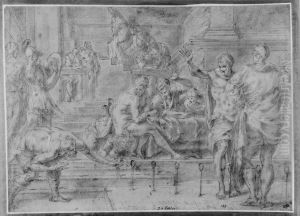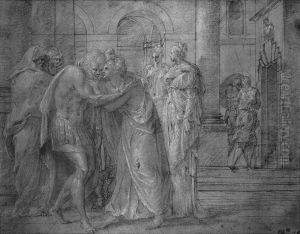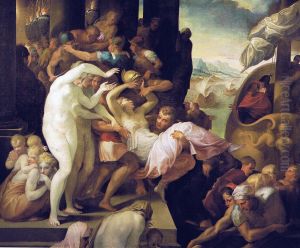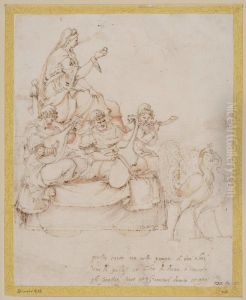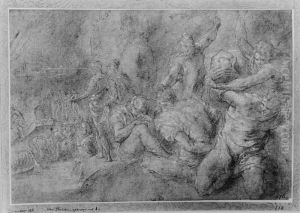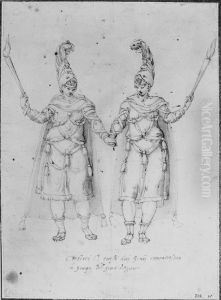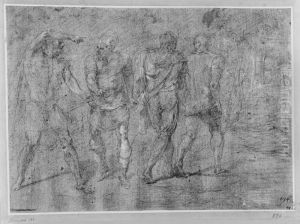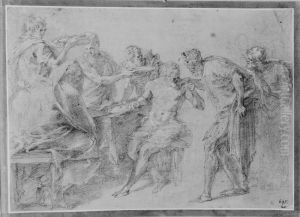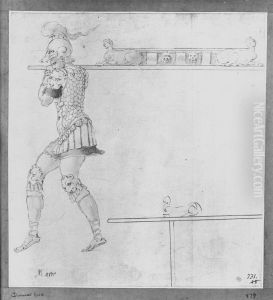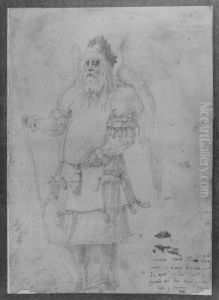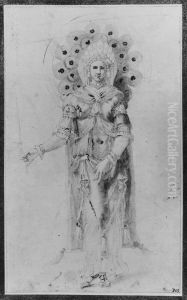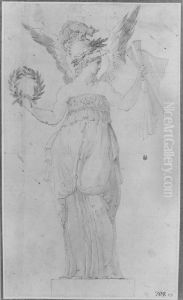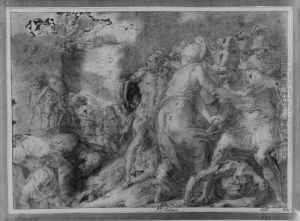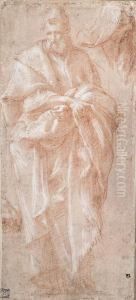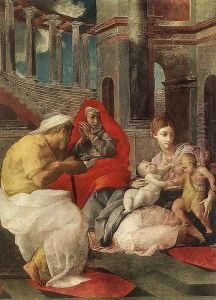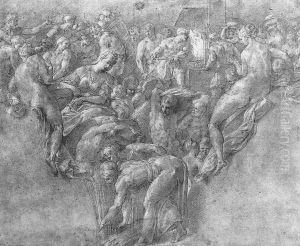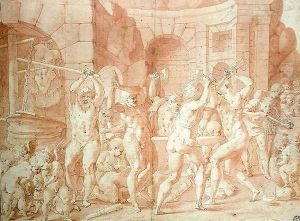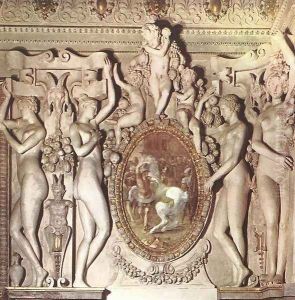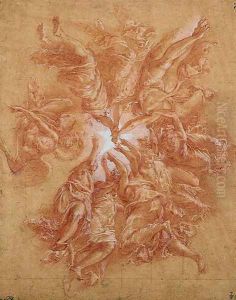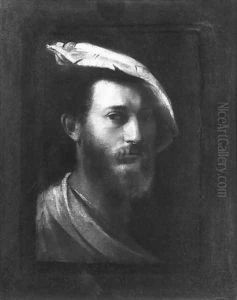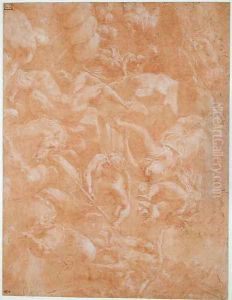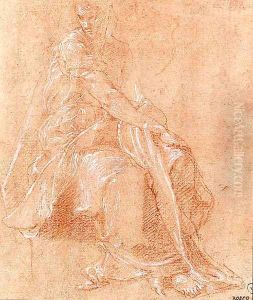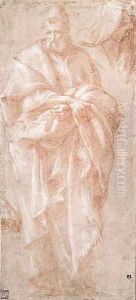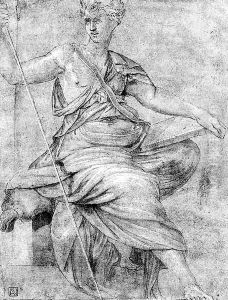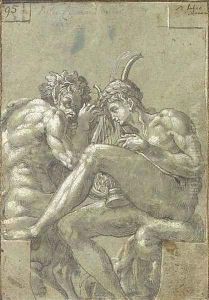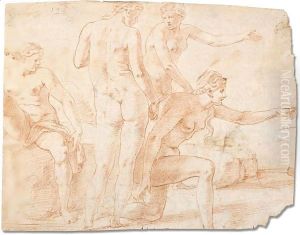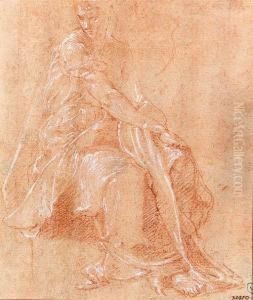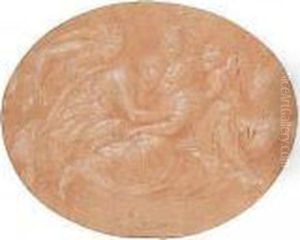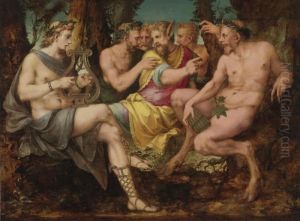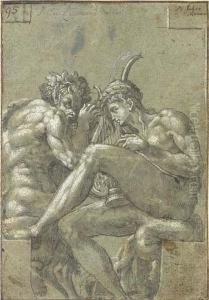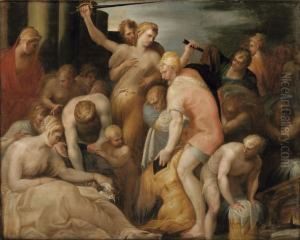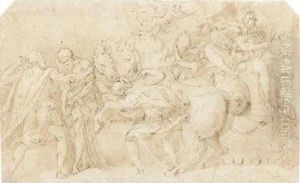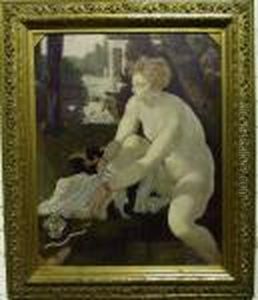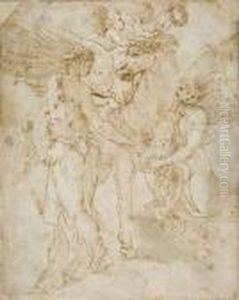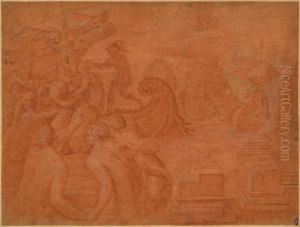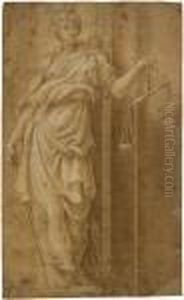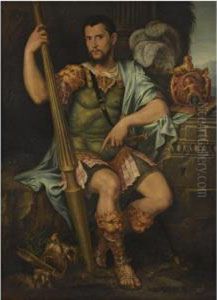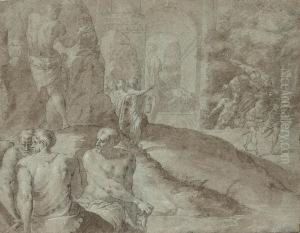Francesco Primaticcio Paintings
Francesco Primaticcio was an Italian Mannerist painter, architect and sculptor who was one of the most prominent artists of the 16th century. Born in Bologna in 1504, Primaticcio was trained under the guidance of Innocenzo da Imola and later, Bagnacavallo. He further developed his artistic skills in Mantua, but his career truly flourished when he moved to France in 1532, under the patronage of Francis I.
Primaticcio was invited to the French court to work on the decoration of the Château de Fontainebleau, where he became one of the main contributors to the first school of Fontainebleau. This was a significant period in French Renaissance art, where Italian influence was a major factor. At Fontainebleau, Primaticcio displayed his talent in a variety of mediums, including fresco, stucco, and oil painting, and also contributed to the design of the palace's gardens and architecture. He introduced the Italian Mannerism to France, which significantly influenced French art.
His works at Fontainebleau include the Gallery of Francis I, the Ulysses Gallery, and the Gallery of Henry II, which are characterized by their elegance, refined compositions, and the elongated figures typical of Mannerist aesthetics. Primaticcio was also responsible for the acquisition of classical antiquities, including the famous Laocoön and his Sons, for Francis I. He was tasked with creating bronze copies of these statues, which further spread the influence of classical art in France.
In addition to his works at Fontainebleau, Primaticcio created designs for tapestries and was involved in decoration schemes for other royal residences. His influence extended beyond painting and sculpture; he was instrumental in decorating interiors, designing furniture, and organizing court pageants.
After the death of Francis I in 1547, Primaticcio continued to work for his successor, Henry II, and later for Francis II and Charles IX. Throughout his career, he maintained a significant position at court and was granted the title of Abbé of Saint-Martin-de-Troyes.
Primaticcio's influence was far-reaching, and his legacy is evident in the way he helped disseminate Italian Renaissance art and ideas throughout France. His style influenced subsequent generations of French artists, and his work remains an important part of the history of French Renaissance art. Francesco Primaticcio died in Paris in 1570, leaving behind a body of work that continues to be admired for its grace and mastery.
